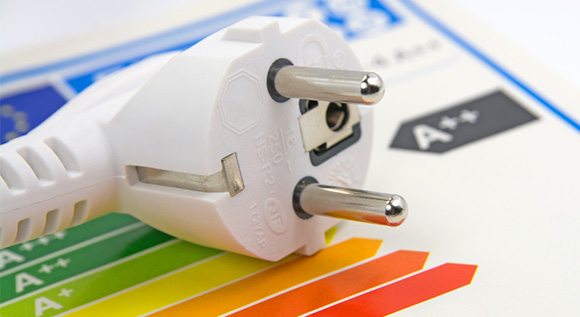Building confidence from A to G
The energy efficiency of a certain appliance is an important factor when deciding on which product to buy. Additional laboratory tests are improving the transparency of the EU Label – and are also improving consumer confidence.
 © Fotolia.com/M. Schuppich
© Fotolia.com/M. Schuppich
For anyone looking to buy a new appliance, the colour-coded efficiency label on vacuum cleaners, washing machines, and many other appliances will be a familiar sight. This is the EU efficiency label. Using a scale ranging from dark green through to dark red, the label provides information about the amount of energy a product consumes and how environmentally friendly it is. The label enables consumers to see at a glance which product is right for them – for their bank balance, and also for the environment. This also has an impact on the manufacturers, as the information provided spurs competition for developing the most innovative and energy-efficient products possible. By 2020, Europe is to have cut its primary energy consumption by 20 per cent. The efficiency label is to play a part in this.
Putting test methods to the test
In order for the principle behind the efficiency label to work, the consumer must be able to rely on the fact that the information provided on the label is correct. So who actually provides this information – who decides whether an appliance is rated A++ or B? The information is provided by the manufacturers themselves, who do, of course, have to follow strict guidelines in their assessment. In Germany, the authorities in charge of this area conduct spot checks in order to verify that the ratings are correct. In other words, the Länder keep an eye on whether the manufacturers are actually sticking to the promises they make to the consumers.
As from January 2016, the Federal Institute for Materials Research and Testing (BAM) will be supporting the Länder in this task by conducting a new project that has been commissioned by the Federal Ministry for Economic Affairs and Energy. The project focuses on developing the methods used for verifying the information that is provided by the manufacturers. The Federal Institute for Materials Research and Testing has itself commissioned the conducting of laboratory tests on a selected range of products. This aims to make product testing more transparent and to strengthen consumer confidence in product information.
This was emphasised by Federal Minister for Economic Affairs Sigmar Gabriel, who said: “The EU efficiency label is an essential instrument for providing consumer information. It informs consumers about the energy consumption and energy efficiency of a product in an easy-to-understand way. However, it is also quite clear that the label will only work if consumers can rely on the information provided. We want to make product testing more transparent by considerably increasing the number of lab tests conducted in Germany. In doing so, we aim to create a level playing field on the market and to strengthen consumer confidence. Increasing the number of lab tests that are conducted will not prevent every instance of illegal manipulation in the future. But we will help more of the manipulation that does take place to be uncovered and prevent some of it from happening in the first place.”
Label to be improved as well
The EU efficiency label is also to undergo an overhaul itself, to make it even easier for consumers to see which products are most efficient. The European Commission has thus proposed a return to the ‘A to G’ system of labelling. The exact time scale for implementing this change depends on the negotiations that are currently taking place in Brussels. The efficiency scale that is currently used also includes A+, A++ or A+++. These ratings are now set to be discarded. They were introduced as a result of improvements in energy efficiency over the years – which have led the ‘A to G’ scale to be no longer sufficient for categorising the energy consumption of some of the more technically developed products. However, some of the products on the market today are hitting even the upper limits of the additional grades and it is once more becoming difficult to differentiate between different products.
In order to reduce energy consumption across Europe even further, more products will need to meet minimum energy efficiency standards, and this will then have to be reflected in the energy-efficiency label attached to the product. As of 1 January this year, use of the European energy-efficiency label has also been extended to ventilators and ventilation systems for domestic living space.

